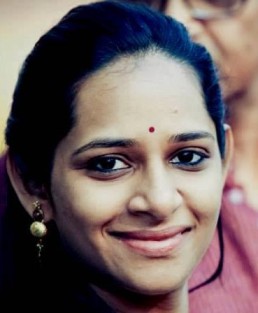This article is part of Failure Files, a special series conceived by India Development Review in partnership with Acumen Academy, where social change leaders chronicle their failures and lessons learnt.
After working with The World Bank for many years, my impatience to lead social change rather than be a small part of a large organisation resulted in my co-founding a social enterprise, Svadha. Our focus was on organising the unorganised rural sanitation market, to ensure quality access to consumers.
In just three years, Svadha did very well and won many accolades. We were close to breaking even and had improved access to sanitation for close to 100,000 consumers.
However, by the fourth year, things changed and I had to take the decision to move on from Svadha. It became clear that deep cracks had surfaced in the business partnership as well as the organisation, moving me away from the mission I had started the company with.
There are a few reasons for this.
Misalignment with my co-founder
I started Svadha along with a co-founder who I found through an extensive online search of experienced people working in the water, sanitation, and hygiene (WASH) space. We had multiple discussions on our long-term vision, ideas around the model, potential avenues for funding (at least for a period of two years), operational and financial viability of the model, and the terms of our partnership as co-founders. My co-founder and I also complemented each other’s working styles—he was more of a big picture person and I was the one with tactical skills to get the job done. With all boxes being checked, it seemed like the perfect partnership.
Related article: 12 lessons for startup social entrepreneurs
However, slowly, this complementarity became the cause of growing incompatibility, both at a strategic as well as operational level.
While we were busy chasing immediate monthly and quarterly targets for our rapidly growing business, strategic differences started to emerge. I could clearly see us moving away from the impact for which we set up Svadha. For instance, in order to be financially sustainable, we focused excessively on our B2B model, and deprioritised the aspect of demand creation among communities, for quality sanitation access. As a result, our patience to invest time in looking for more impactful institutional partnerships and hiring experienced team members, reduced. In spite of multiple discussions, we could not reach a consensus on how to re-align our current model to fit our larger, common vision.
Operationally, challenges started emerging in the third year, when Svadha began to expand rapidly, and hence demanded the dedication of both co-founders to raise more funds and build a strong management team to drive scale. Again, we couldn’t agree to set the innovation work aside for the time being, so that my co-founder could instead support our fundraising and growth.
Once differences between us started surfacing, it affected my drive towards the cause.
Once differences between us started surfacing, it affected my drive towards the cause. Moreover, it significantly impacted the morale of the management team, and their trust in our commitment towards the cause. This, in turn, resulted in an atmosphere of doubt and negativity, and a decline in patience to stay the course and try new things—a clear sign of things going downhill.
It became clear to me that our strategic priorities were simply not aligned. For instance, rather than focusing on Svadha’s core model in its formative years, my co-founder chose to invest his time, energy, and financials in related innovations, such as clean water or low-income housing, which to me, seemed like a diversion. According to me, what Svadha needed back then was a 100 percent focus on making its own sanitation model resilient. I felt that we could always branch into adjacent areas after we had established the core model. Plus, it would be practically impossible for one co-founder to run all facets of the company, especially when the managerial team was still being formed and trained in critical decision making.

Slowly, this complementarity became the cause of growing incompatibility, both at a strategic as well as operational level. | Picture courtesy: Pixabay
When I thought hard about the reason for these misalignments, I realised it was because I hadn’t done sufficient due diligence around the ‘adaptive aspects’ of the partnership with my co-founder—aspects which go beyond technical compatibility and revolve around ‘how’ we achieve our long-term vision. In hindsight, I feel that going ahead with my business idea on my own would have been a better route to take. I could have partnered when the roadmap was clearer, or when I could identify tangible gaps that needed to be filled. It would have been a better strategy to bring on a business partner after having tested our ability to work together for some time, and having assessed the key aspects of the partnership.
Or, since I was initially more comfortable starting off my business with a partner, I could have spent more time discussing a more detailed roadmap of the model (at least the first two years), along with demarcating clearer roles and responsibilities between us to support our growth. This way, we would have been able to envision a more certain path for our partnership, and would have also managed our respective priorities better.
Over-dependence on certain key members
My second big failure was my inability to assess the changing commitment and interest of some of my management team members, in our model. Given limited budgets, start-ups have to remain lean with a high dependency on a few key team members. I, as the leader, misjudged the commitment levels of these members, and when one of them left, it ended up costing the venture dearly, affecting its growth and stalling day-to-day operations.
What I could have done better was to pay closer attention to the changing commitment levels of these few members.
As a start-up leader, I couldn’t change the fact that I had to have a lean team. What I could have done better was to pay closer attention to the changing commitment levels of these few members; and slowly minimise dependence on them. This would have avoided the vacuum created in our operations and the overall dip in the team’s morale, following the sudden departure of these members.
Related article: Learning to be a better, braver leader
Wanting meaningful and sustained impact, fast
I always wanted to see our model creating sustained impact, fast. But here’s the catch—‘sustained’ and ‘fast’ are two aspects that can either complement each other or be in conflict with each other, and this depends on how we set our short-term targets vis-à-vis our long-term goals.
With Svadha, we theoretically always wanted to achieve the two together. But in the sprint to achieve short-term targets, we, as co-founders, were not able to collectively agree to take a pause by the third year. This pause was necessary not only to align with the current team and financial situation, but also for us to re-adjust towards a more long-term, high-impact model, aligned with our mission. We kept delaying our plans to run a marathon, which for us meant investing time and resources in building a stronger management team, as well as reducing dependence on a few people.




